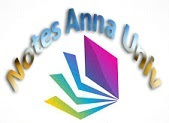PART A (10x2=20)
1.
What
is single line diagram?
2.
Define
per unit value
3.
Draw
a simple per-phase model for a cylindrical rotor synchronous machines
4.
What
do you mean by transient & steady state conditions?
5.
Draw
the equivalent circuit of three winding transformer
6.
What
is the need for load flow study?
7.
When
it generated bus treated as load bus?
8.
What
is Jacobian matrix?
9.
What
is a slack bus?
10. What is meant by acceleration
factor in load flow studies?
Part B (5x13=65)
11. Draw the reactance diagram for
the power system shown in Fig.1. Neglect resistance & use a base of 50 MVA
& 13.8 KV on generator G1.
Determine the new value of per
unit reactance of G1, T1, Transmission line 1, Transmission line 2,
G2, T2, G3 and T3
12. Form Ybus of the test
system shown in Fig.2 using singular transformation method. The impedance data
is given in Table 1. Take (1) as reference node.
13. The one-line diagram of a power
system is shown in fig(i). The three phase power and line-line ratings are
given below.
Draw an impedance diagram showing
all impedance in per-unit on a 100 MVA base. Choose 22 KV as the voltage base
for generator.
14. Draw and explain the step by step
procedure of load flow solution for the Gauss seidal method when PV bus are
present
15. Draw the impedance diagram for
the electric power system shown in fig 1 showing all impedance in per unit on a
100 MVA. Choose 20 KV as the voltage base for generator. The three-phase power
and line-line ratings are given below
Part C (1x15=15)
16. Draw and explain the step by step
procedure of load flow solution for the Newton-Raphson method

0 Comments